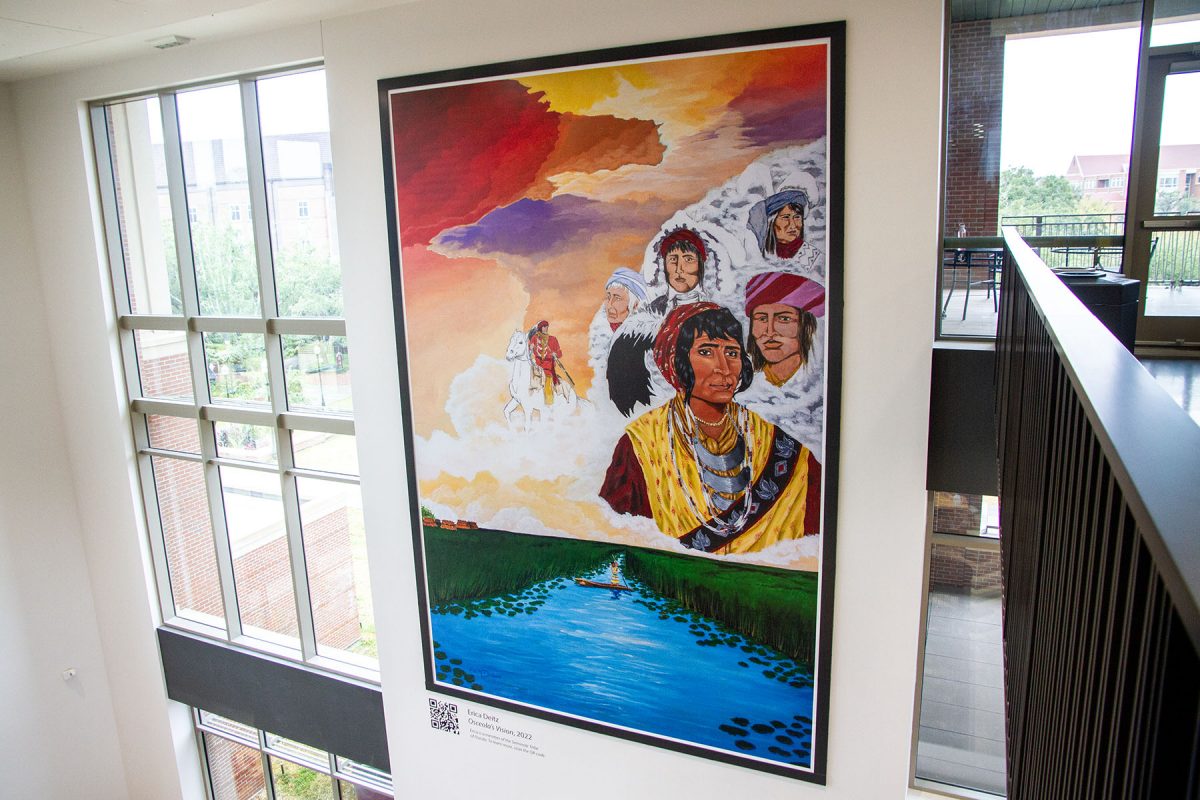
In partnership with the Seminole Tribe of Florida, a new study center has been created at Florida State University that serves as a conceptual hub for Native American and Indigenous research and artistic practice to promote educational initiatives and collaborative scholarship.
The Native American and Indigenous Studies Center (NAIS) promotes and coordinates consultations with tribal nations and community leaders, educational efforts inside and outside of the classroom and collaborative scholarship more broadly.
“My vision is that the center will be the intellectual and cultural home for the university’s outreach with the Seminole Tribe of Florida and other Native American tribes in the South and a national leader for collaborative research and programming,” said Andrew Frank, the center’s inaugural director and the Allen Morris Professor of History.
FSU has called itself the “Seminoles” since becoming a coeducational school in 1947. While the relationship includes the use of the Tribe’s name and symbols in the university’s athletic department, the new center is a part of FSU’s larger commitment to collaborate with the Seminole Tribe of Florida as intellectual partners.
With support from the Office of the Provost, faculty members like Frank joined a planning committee dedicated to the center’s development.
“Creating this center and expanding our scholarly work in Native American and Indigenous studies advances our research mission and strengthens our unique partnership with the Seminole Tribe of Florida,” said Jim Clark, provost and executive vice president for Academic Affairs. “Many have dedicated their time and care to this exciting new endeavor, and I’m grateful for their efforts.”
The center also will extend its focus to collaborations with Native and Indigenous groups outside of the Seminole Tribe of Florida. Constructive conversations with representatives from groups such as the Muscogee Nation, Miccosukee Tribe of Indians of Florida and Choctaw Nation moves the center closer toward its goal of global indigeneity.
“We have a special obligation to the Tribe and many community members are interested in the center because we are ‘Seminoles,’ but the center goes beyond more than Seminole outreach,” Frank said.
Although Florida State University and the Seminole Tribe of Florida have a longstanding, institutional partnership, Frank hopes that the center will strengthen the intellectual collaboration between the partners.
“The center is committed to aligning the questions and concerns of the modern Seminole Tribe with the expertise we have at the university, and I think that’s a win for both communities,” Frank said.
The NAIS Center will cater its curriculum and programming around graduate and undergraduate students interested in Native American and Indigenous cultures and the nature of the university’s partnership with the Seminole Tribe of Florida.
“We have a special obligation to the Tribe and many community members are interested in the center because we are ‘Seminoles,’ but the center goes beyond more than Seminole outreach.”
– Andrew Frank, director of the Native American and Indigenous Studies Center
Frank said that the joy of building the center is figuring out what students really want.

“It’s an opportunity to help preserve and pass along the knowledge of Native American and Indigenous studies,” Frank said. “We have a lot of students, athletes and non-athletes, who know they wear Seminoles on their chest, their shirt, their hat. They’re curious about the notions of appropriation and partnership, and they very much want answers.”
One way student-athletes and fans are honoring the Seminole Tribe of Florida is through the turquoise uniforms being worn at Athletics games and the new line of Seminole Heritage merchandise. The color turquoise was chosen as it represents harmony, friendship and fellowship in many Native American cultures. A portion of the proceeds from the sale of Seminole Heritage merchandise goes towards supporting the NAIS Center to support programs for Indigenous youth at FSU and public education about the Seminole Tribe of Florida.
In addition to its curriculum, the NAIS Center hosts a monthly lunchtime brownbag seminar featuring the research and artistic practice of graduate students.
Recently, the center hosted the American Society for Ethnohistory annual conference where scholars of cultural anthropology, history, American Indian studies, archaeology, ecology and linguistics collaborated with modern Indigenous communities and shared new scholarship within Native American and Indigenous studies.
Frank said hosting this preeminent international conference is an example of how the center engages in larger conversations beyond Florida State’s campus, which is an important aspect of the center.
The physical center will soon have a permanent location near the Westcott Building.
For more information, visit nais.fsu.edu.




